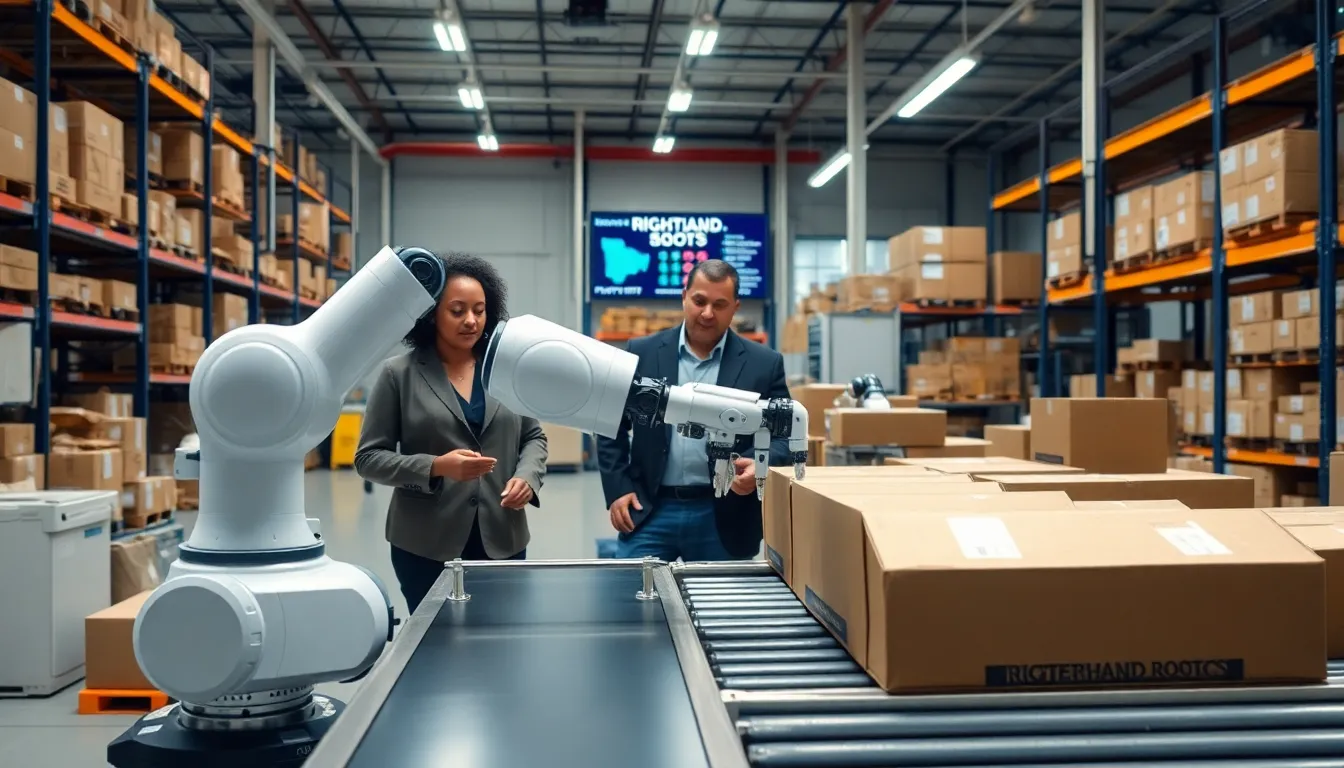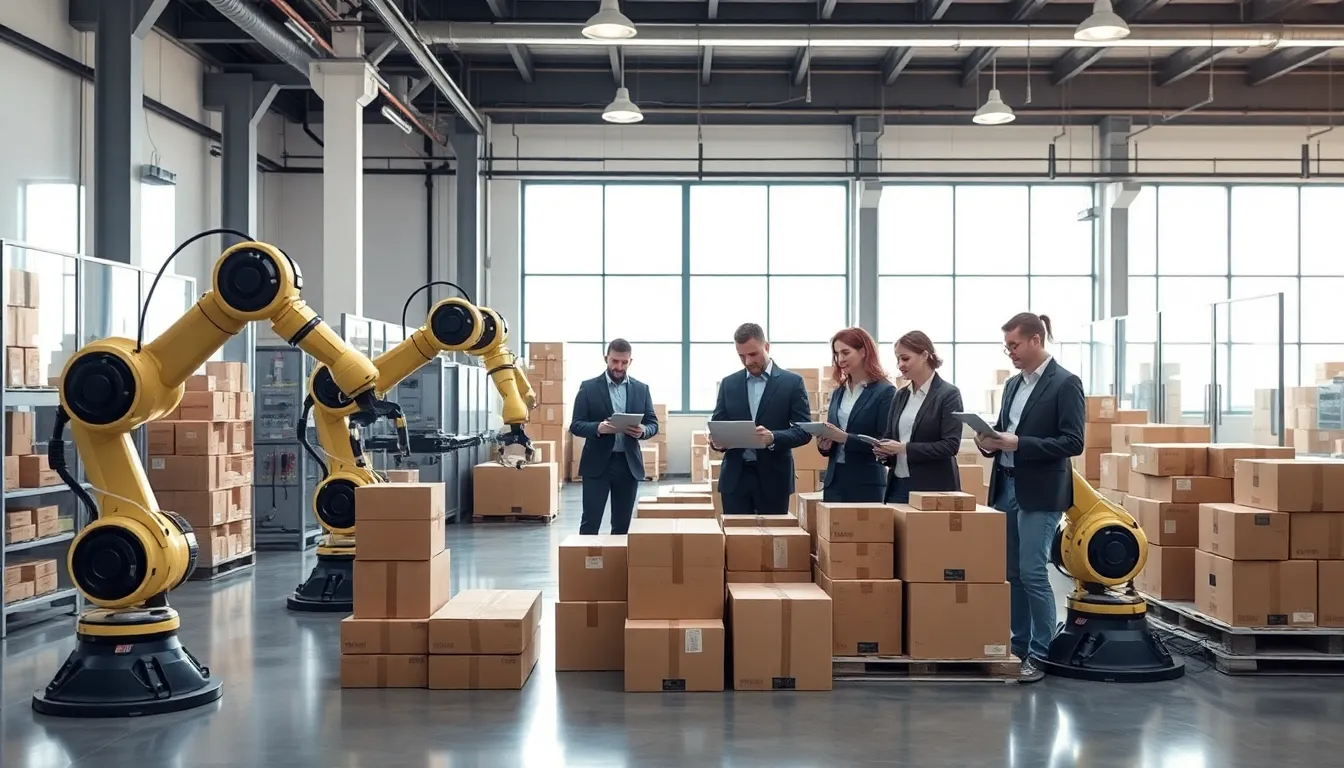Table of Contents
ToggleImagine a world where robots effortlessly handle tasks ranging from simple to complex, making your work-life smoother than a freshly polished glass tabletop. Welcome to Righthand Robotics, where innovation meets function, blending cutting-edge technology with practical application. In a time when automation has transitioned from science fiction to everyday reality, Righthand Robotics stands at the forefront, ready to change the game. So, what exactly is Righthand Robotics, and how is it steering us into a smarter future? Buckle up, because we’re diving deep into a world where the right hand does more than assist, it revolutionizes.
What Is Righthand Robotics?

Righthand Robotics is not just a company: it’s a movement aiming to simplify and enhance warehouse operations through smart automation. Born from the idea that robots can aid humans, this forward-thinking entity specializes in developing robotic systems designed to assist with tasks like picking, packing, and sorting. In essence, they operate like an extension of your team, working alongside humans rather than replacing them. Founded with the mission to improve operational efficiency, Righthand Robotics combines artificial intelligence with innovative software, allowing their robots to learn and adapt to various workflows and environments. What’s truly impressive is how Righthand’s systems can seamlessly integrate into existing operations, making automation accessible for businesses large and small.
Key Technologies Behind Righthand Robotics
At the heart of Righthand Robotics lies a suite of advanced technologies that are as fascinating as they are essential. First up, machine learning algorithms allow robots to continuously improve their performance, learning from past experiences to enhance speed and accuracy. Then there’s computer vision, which equips them with the ability to recognize and understand objects in their environment. This technology is like giving robots a pair of eyes, enabling them to discern items with amazing precision.
Another cornerstone is robotic manipulation. This involves the design of grippers and arms that mimic human dexterity. By incorporating flexible and adaptive manipulation abilities, these robots can handle a myriad of packages, ranging from delicate items to heavy parcels, just like a skilled warehouse worker would. Besides, the integration of cloud computing makes it possible to control and manage multiple robotic units from a single platform, enhancing efficiency and oversight. Together, these technologies form a cohesive ecosystem that elevates Righthand Robotics above the competition.
Applications in Various Industries
Righthand Robotics finds application across a broad spectrum of industries, proving to be a versatile ally. In the retail sector, for instance, these robots streamline operations by quickly sorting and organizing products in distribution centers, ensuring that shelves are stocked and ready for customers.
E-commerce businesses benefit significantly too. With the surge of online shopping, efficient fulfillment has become a critical factor for success. Righthand’s robots expedite the picking process, handling pulsating demands and ensuring that orders are sent out quickly and accurately.
The healthcare industry is another area where Righthand Robotics shines. From managing inventory in hospitals to automating medication dispensing, these robots play a crucial role in enhancing operational efficiency and reducing human error.
In the manufacturing arena, robots assist in assembly lines, performing repetitive tasks that allow human workers to focus on complex problem-solving and creativity. By reducing labor costs and improving safety, Righthand Robotics is transforming not just warehouses but entire industries.
Benefits of Implementing Righthand Robotics
Implementing Righthand Robotics yields a multitude of benefits that extend beyond mere automation. Cost efficiency is one of the key advantages: by integrating robotic systems, companies can reduce labor costs, minimize errors, and decrease operational downtime. Also, when robots handle the tedious or hazardous aspects of a job, human workers can devote their energies to more important strategic tasks, enhancing overall workplace satisfaction and productivity.
Another noteworthy benefit is scalability. As businesses grow, so do their demands. Righthand’s robots can be integrated into existing systems, allowing for straightforward scaling of operations without a complete overhaul.
Also, implementing these robotic systems can lead to improved accuracy and speed in operations. The technology reduces the likelihood of human error, making processes cleaner and more dependable. Enhanced tracking systems enable managers to gain better insights into inventory and workflow, empowering them to make smarter business decisions. All these combined elements create a winning formula for businesses eager to stay ahead in a competitive landscape.
Challenges Faced by Righthand Robotics
Even though its advantages, Righthand Robotics does face various challenges in its quest to reshape automation. One major hurdle remains the initial cost of implementation. For many businesses, investing in robotic systems requires substantial upfront capital. This can be a deterrent, especially for smaller companies operating on tight budgets.
On top of that, there’s the need for specialized workforce training. Employees must adapt to working alongside robots, which means shifts in job roles and responsibilities. Some workers may feel threatened by the introduction of automation, posing a challenge concerning workforce morale.
The rapid pace of technological advancement also presents a double-edged sword. As tooling and software improve, there’s an ongoing need for regular updates and maintenance. Staying ahead of the curve requires continuous investment and a strong commitment to innovation. Besides, integrating robotic systems into existing workflows requires careful planning and consideration to minimize disruptions.
The Future of Automation with Righthand Robotics
Looking ahead, the future of automation with Righthand Robotics appears promising. With advancements in AI and robotics, these systems will only become smarter and more efficient. Future developments may even include enhanced teleoperation capabilities, where human operators can remotely control robots in real time for delicate operations.
Also, as the demand for personalized and just-in-time delivery grows, Righthand Robotics could lead the charge in creating adaptable systems that respond instantaneously to fluctuating market needs. Also, sustainability will play a significant role in shaping the direction of automation. As companies become increasingly mindful of their carbon footprints, Righthand’s robots may incorporate energy-efficient technologies, making processes environmentally friendly while maintaining productivity.
In essence, Righthand Robotics is portrayed as a trailblazer, not just in terms of technology, but also in the way industries approach labor and automation, paving the way for sustained growth and innovation.






